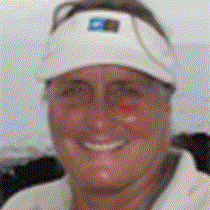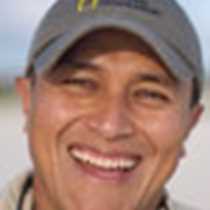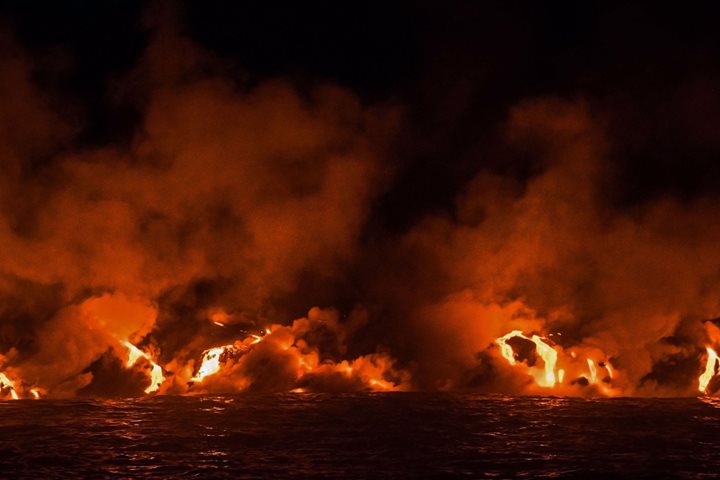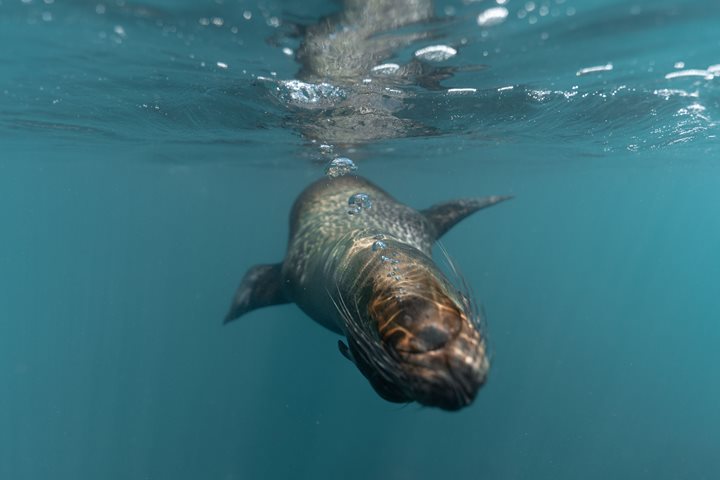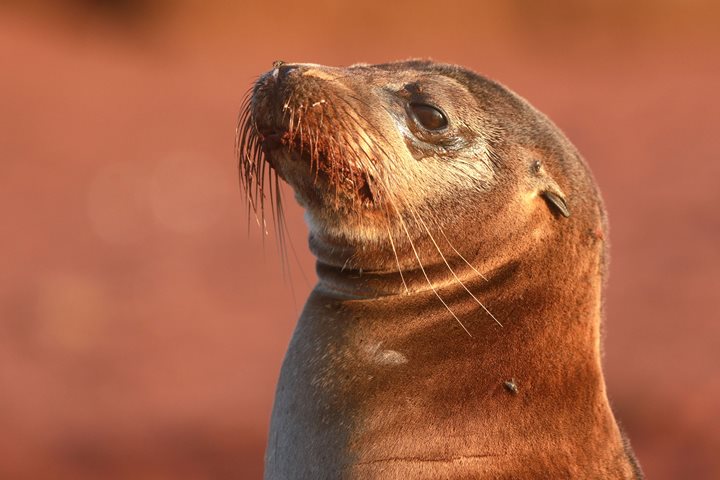Smooth sailing much of the night brought us to the central island of Santiago. When we awoke and gazed towards shore we were surprised by a totally new landscape! We were anchored beside an extensive barren lava field that we know poured forth as hot molten lava in 1897. Whaling ships working in the archipelago recorded a major eruption that continued for weeks and spread along this southeastern coast of Santiago. This morning we explored the lava and coast, first by Zodiac, kayak and paddle boards, then while snorkeling. In the afternoon, we hiked on a smooth section of pahoehoe lava at the northern edge of the flow.
- Daily Expedition Reports
- 30 Mar 2018
Sombrero Chino and Santiago Islands, 3/30/2018, National Geographic Islander
- Aboard the National Geographic Islander
- Galápagos
Lynn Fowler, Expedition Leader
Born in Baltimore, Maryland, and one of seven children, Lynn grew up in various university towns where her father was a professor of physics. Lynn obtained her B.A. in biology from Earlham College in Richmond, Indiana, followed by a master’s degree i...
Read MoreJosé Guerrero, Naturalist/Certified Photo Instructor
José Guerrero Vela is an Ecuadorian permanent resident of the Galapagos. His mother was born in the islands and his grandfather was one of the first generation of teachers in the Galapagos, which has always inspired him to promote education as the ma...
Read MoreShare Report
Related Reports
11/23/2022
Read
National Geographic Islander II
Isabela and Fernandina
Our day began with the chance to point out a lot of interesting geological features as we enjoyed Zodiac tours along a massive flank of Ecuador Volcano on Punta Vicente Roca. In the afternoon, we took a sunny walk on Punta Espinoza on Fernandina Island. We spotted many iguanas, and a bunch of sea lions hanging around, too.
11/22/2022
Read
National Geographic Islander II
North Seymour & Rabida Islands
Relatively small and low compared to neighboring Santa Cruz, North Seymour is located to the north of Baltra. The island is dry with predominantly low shrubs, like prickly pear cacti. The incense trees are bare during the dry season. Seabirds like frigatebirds and blue-footed boobies nest on the island, and sea lions rest on the sand when they are not fishing. Land and marine iguanas also live here. Rabida is in the middle of the archipelago and has a striking red sand beach. We observed a small colony of sea lions of all ages resting or nursing. Behind the beach, American flamingos nest in a brackish lagoon. This island is full of contrasts and wildlife that we enjoyed observing during this day of expedition.



